
Proud of Our People! Vasily Surikov, Artist of Russian History
/ Главная / Russkiy Mir Foundation / Publications / Proud of Our People! Vasily Surikov, Artist of Russian HistoryProud of Our People! Vasily Surikov, Artist of Russian History
Everyone who studied in the USSR and Russia probably remembers Vasily Surikov's paintings. Such canonical illustrations in schoolbooks as "The Morning of the Streltsy Execution", "Menshikov in Berezov", "Boyarina Morozova", "March of Suvorov through the Alps", as well as "Taking a Snow Town", "Conquest of Siberia by Yermak", "Stepan Razin" are all his artworks. He was probably the most prominent painter of the historical genre in Russia, and he alone made up the entire epoch in the development of Russian painting.
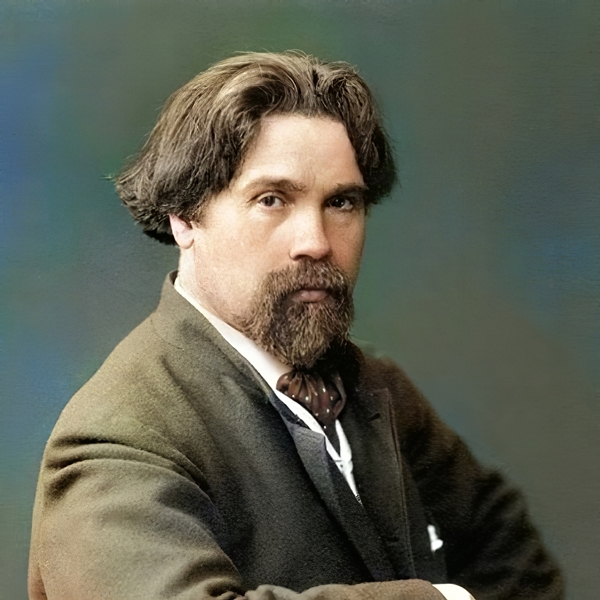
The Spirit of Siberia
Vasily Surikov was born to a Cossack family in Krasnoyarsk on January 12 (24), 1848. He started painting at an early age. He used every chance for it. According to him, he was fascinated by beauty, especially the effects of colors, since his childhood, and he tried to depict it on paper.
The artist was proud to be of Siberian Cossack ancestry. The Surikovs and the Torgoshins (on his mother's side) were not of noble rank. Yet, these were old families of true Siberian Cossacks. His ancestors had been among those who founded Krasnoyarsk in the seventeenth century. There was something traditional and Cossack-like in his appearance. He had a strong deep-chested stature. His hair was cut in a fringe.
The artist remembered the vivid experiences from his childhood in Siberia for the rest of his life. He was glad to share them later with Maximilian Voloshin who wrote his biography. In the mid-19th century, life in Siberia was still patriarchal. He spoke of his relatives who had lived as a large extended family, his sisters of Russian epic beauty, the songs that the whole family had sung outdoors in the evenings, his grandfather who had never made bad shots at hunting, the fist fights he had participated in as a young man. "Yenisei Siberia... is a country full of profound and distinctive beauty. There are virgin forests of taiga with wild animals for hundreds of versts. Sacred paths wander through the taiga for dozens of versts and suddenly take you to a swampy bog, or to the wilds of the craggy mountains. Sometimes you can see a turbulent stream flowing down from the mountains. As you approach the Yenisei, there are rich grasslands with grazing herds along one or both banks," the artist recalled.
"Something strange began to happen to me here in Moscow. First of all, I felt much more comfortable here than in St. Petersburg... Yet, it was the Kremlin with its walls and towers that captivated me most of all... Its walls were my favorite spot for walks during the twilight hour. The darkness descended upon the ground and hid all the silhouettes... Sometimes it would suddenly seem that those were not bushes growing near the walls but some people dressed in old Russian garments..." - recalled Vasily Surikov.
“Streltsy”
Vasily Surikov loved his small motherland. When he was already a renowned painter, he often came to Krasnoyarsk with his family to rest and recuperate. This was where he found genuine Russian characters for his paintings.
That distinctive life certainly influenced all the artist's work, which is fraught with love for the Russian olden times. However, this is only one of his backgrounds. His studies at the Academy of Fine Arts in St. Petersburg and his trips to Europe where Vasily Surikov had closely studied the paintings of European painters, were the other.
The gift of the young painter became apparent at the Academy where he received a scholarship from Pyotr Kuznetsov, a gold industry entrepreneur from Krasnoyarsk. Over the course of his studies (1869 - 1875), he received four silver medals, several cash rewards, and a small gold medal for his works. According to the artist, that money was quite enough for him.
In Moscow
When Vasily Surikov graduated from the Academy, he was commissioned to paint four frescoes dedicated to the Oecumenical Councils for the Christ the Savior Cathedral. He moved to Moscow, which predestined the artist's fate in many regards. Vasily Surikov felt out of place in the cold, classicist St. Petersburg but he fell in love with the ancient capital in no time.
It was during one of these walks that the artist conceived the idea for his first absolute masterpiece, The Morning of the Streltsy Execution. Back then, public executions and punishments (whipping) were still common in Siberia, and the artist somewhat knew the subject. "I've always been struck by the beauty in it," he recalled. "Black scaffold, red shirt - splendid! And that's how offenders took it: if you committed a crime, you must pay for it. And sometimes people were so strong that they could take a hundred whips without even crying out. And there was no horror. It was more of a thrill. The nerves could take it all."
Nevertheless, such a complex painting required talent, skills, as well as mental strength. "When I was painting "Streltsy." I used to have awful nightmares: every night I dreamt of executions," the artist shared recalled. "There was s a smell of blood everywhere. I feared the nights. I would wake up and rejoice. Then I looked at the painting. Thank God, there was no horror in it... My intention was to portray the solemnity of the final moments and not the execution.”
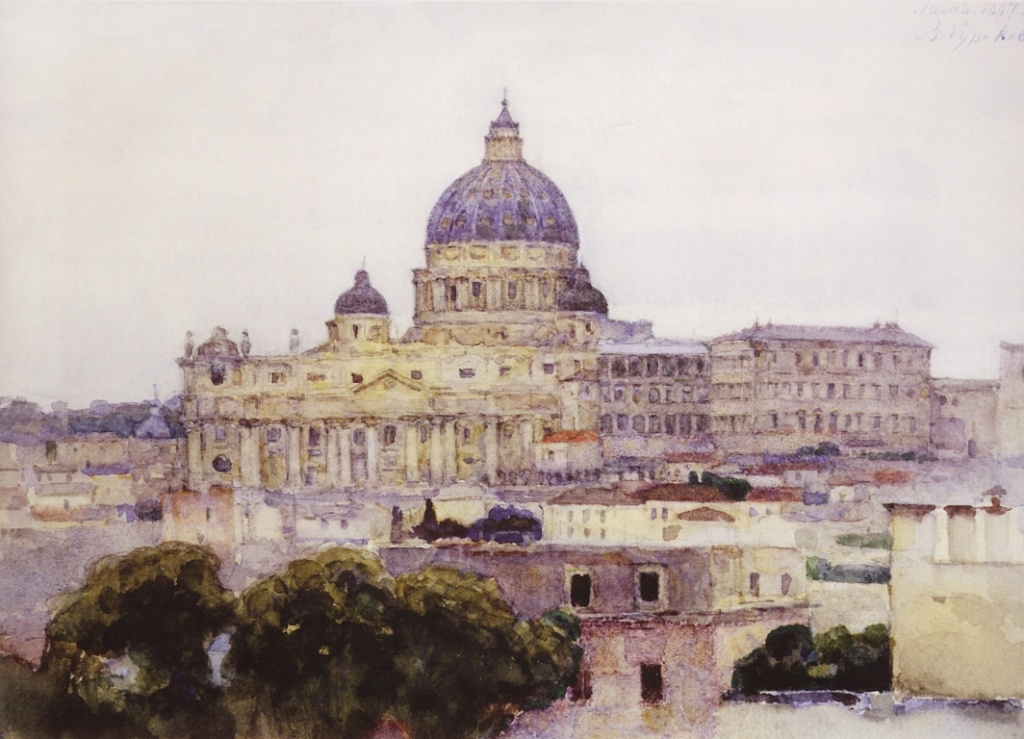
The painting was displayed at the 9th Itinerant Exhibition in 1881. It made a tremendous impression. There were plenty of both enthusiastic and critical reviews. This polarization of opinions about the artist's work would last throughout his life. Ilya Repin referred to "Streltsy" as the highlight of the exhibition. There were those who criticized the painting for its overly crowded composition, dark shades, and flaws in the drawing.
One thing is certain: the painting touched everyone's feelings with its vibrancy and power. In contrast to other artists who painted historical themes in a classical manner, Vasily Surikov's painting was not an imitation, not an "elaboration upon the set theme," but an eyewitness testimony. It was the menacing 17th century that confronted the viewer from his canvas.
Three of Vasily Surikov's best (acclaimed by critics) works were painted during the decade from 1878 to 1888. These are "The Morning of the Streltsy Execution", "Menshikov in Berezov", and "Boyarina Morozova". They all have historical and semantic content, thus making a trilogy.
“Menshikov”
As to the conception of his second famous painting, the artist mentioned the following: "I was staying at a country retreat near Moscow. It was a peasant's house. It was a rainy summer. It was a cramped house with a low ceiling. I couldn't work because of the rain. It was boring. So I thought, "Who was sitting in the house just like that?" And suddenly I remembered Menshikov... I saw the whole composition right away."
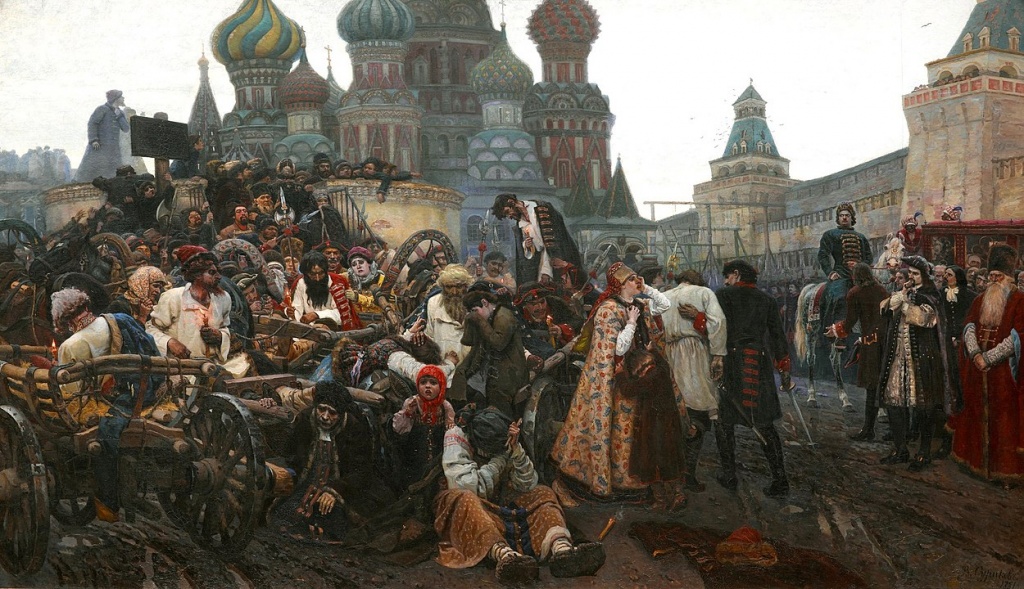
The artist's model for the disgraced prince was Mr. Nevenglovsky, an ordinary gymnasium teacher. Vasily Surikov met him accidentally in the street. "I suddenly saw Menshikov walking along Prechistensky Boulevard. I followed him to see where he lived... The first time, he didn't even let me. The second time I was able to come in and paint on his entresol. He wore his robe and had a ring on his hand. He was unbarbered, just like Menshikov. He asked who I was going to paint. I told him, "Suvorov" so he would not get upset", Surikov told with a touch of humor.
The painting features the disproportion between Menshikov's enormous height and the low ceiling of the house, which caused the painter to be frequently criticized for not observing the rules of perspective. However, Vasily Surikov may have done that deliberately to stress the tragic situation of this strong personality condemned to oblivion in exile.
There were those who didn't like the artist's new piece. Nevertheless, Pavel Tretyakov was the first to recognize the transcendent drama of the painting and its coloristic sophistication. Having sold "Menshikov" to Mr. Tretyakov for 5,000 rubles, Vasily Surikov took his first much-anticipated trip abroad.
Time in Europe
The Surikovs traveled to Berlin, Dresden, and Cologne. They explored the local art galleries in detail. The painter spent the longest time in Paris. His interest was not confined to the treasures of the Louvre. Vasily Surikov was intrigued by French contemporary art and appreciated the works of the Impressionists. Yet he was particularly impressed by the Old masters, such as Titian, Veronese, and Velázquez. "Having seen a multitude of paintings, I have reached the conclusion that only genuine coloration of nature rendered (in work) can bring lasting, unalterable pleasure. Old Italian and Spanish masters keep convincing me of this mystery...," he wrote to his teacher Pavel Chistyakov in St. Petersburg.
"Boyarina Morozova"
"Boyarina Morozova" is one more masterpiece by Vasily Surikov. He started painting it upon his return to Moscow. The artist confessed that the concept had also emerged unintentionally. He saw a black crow in the snow. It raised its wing in a special way... The composition was prompted by memories of one of Krasnoyarsk's streets that had been used as a path to the scaffold.
In fact, the artist had lived with this theme for a long time. Even as a child, he heard the story of Boyarina Morozova, the fierce schismatic who had opposed the tsar defending the old faith and was tortured and imprisoned.
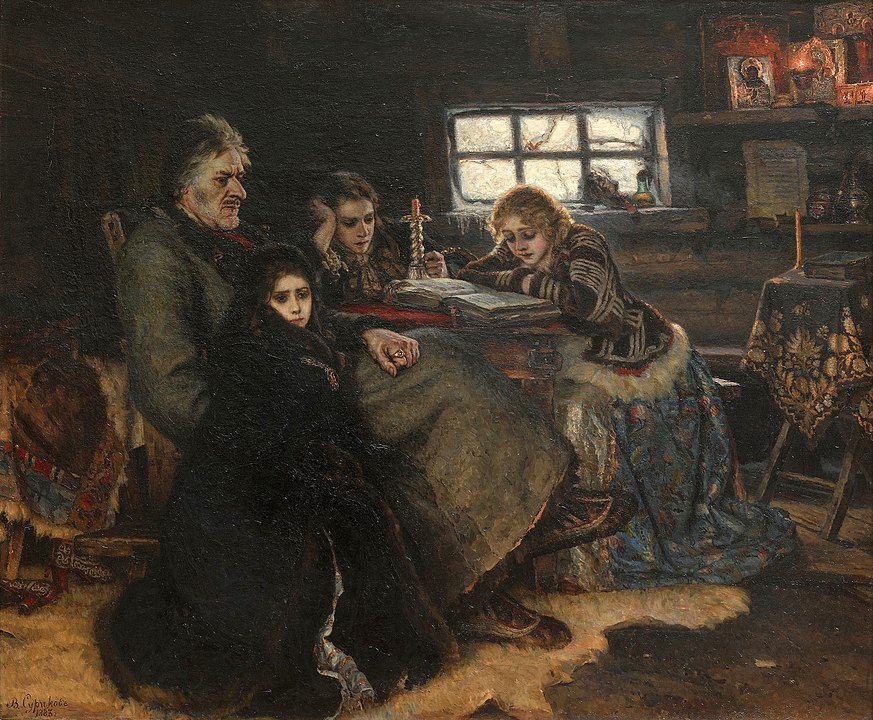
It took the artist a long time to find a face for the main figure. He was looking for suitable female characters by visiting the Preobrazhenskoye Cemetery in Moscow, which was associated with Old Believers. He found minor characters. However, there was no one for Boyarynya Morozova's role. Finally, the artist got lucky, just as in the case of Menshikov. Some Old Believers from Moscow helped Vasily Surikov. Morozova's "face" was found.
The right image sets the tone for this masterpiece. Boyarynya Morozova's cold-hearted, authoritative face, and her vigorous posture create a vibrant strain between the central character and the crowd around her.
"Vasily Surikov has now painted a piece which, in my opinion, is the best of all our paintings based on Russian history. Our art, which undertakes the task of representing old Russian history, has not yet gone above and beyond this painting," wrote Vladimir Stasov, a famous critic of this painting.
"Boyarynya Morozova" was displayed at the 15th Itinerant Exhibition in 1887. It was received with great enthusiasm by the public. The painting was also bought by Pavel Tretyakov for his gallery. this time the price was 15,000 rubles.
Tragedy and recovery
This artist's fruitful upswing was abruptly interrupted when his wife Yelizaveta Augustovna became seriously ill. Medicine could not help and she passed away in 1888. The artist was badly affected by the loss. "See, Sasha, my life has been shattered. I can't even imagine what will happen next," he wrote to his brother. The artist saw the solution in faith and ardent prayer. "After a hard, painful night, he got up early and went for the morning prayer... He prayed for his deceased friend ardently, hitting the slabs of the church with his hot forehead... Then, having worn a fall overcoat, he ran through snowstorms and frost to Vagankovo Cemetery. He called and prayed to the deceased on her grave, weeping bitter tears. What was his soul grieving about?" recalled the artist Mikhail Nesterov who became very close to Surikov during that period.
The artist went back to his birthplace, Krasnoyarsk. He treated his grief with the best remedy he had - his art. Back then he took his brother's advice and created one of his most vigorous and uplifting paintings, "Taking of a Snow Town". Vasily Surikov saw this traditional Maslenitsa fun in his childhood. So he did his best to depict it in paint. This painting was successful. The artist received a bronze medal for it at the International Exhibition in Paris (1900).
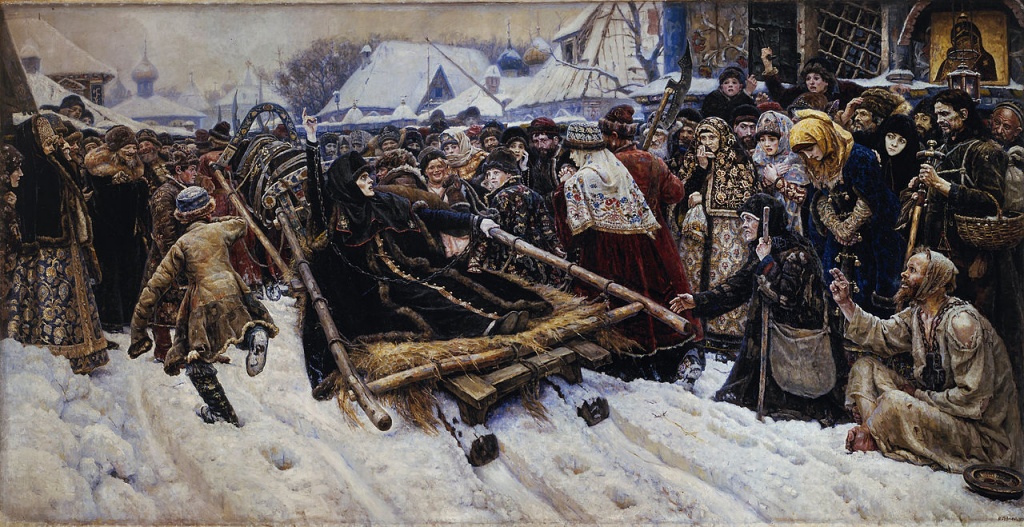
Having completed "Taking of a Snow Town", Vasily Surikov commenced working on "Conquest of Siberia by Yermak". This theme could not help but excite the artist. He knew legends and tales of Yermak and his brave supporters from his childhood. Nevertheless, the artist's distinctive approach to the theme was apparent here as well. "There is a substantial personal experience in Conquest of Siberia," he said. "Everything is all familiar from Siberian life. Even the silhouettes of the horsemen galloping in confusion on the far shore were also the images of some vivid impressions preserved by memory."
He worked on this piece from 1891 to 1895. An enormous quantity of historical materials was collected, and he drew many sketches. Vasily Surikov toured the entire Krasnoyarsk region visiting the remotest villages and searching for typical Tatars, Ostyaks, and Voguls.
The painting was displayed at the 23rd Itinerant Exhibition in St. Petersburg, which was attended by Emperor Nicholas II. The tsar was so impressed with the painting that he bought it for 40,000 rubles, and later donated it to the Russian Museum. In 1895, the Board of the Academy of Arts awarded Vasily Surikov the title of Academician.
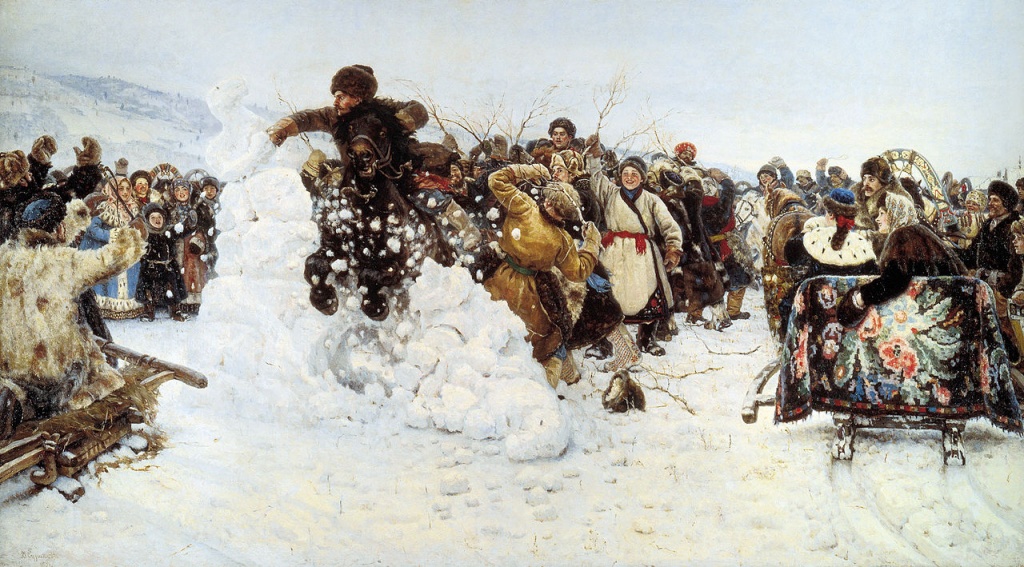
Russian Painter
Apparently, the history of Russian art knows no other artist who has inspired such inconsistent opinions as Vasily Surikov. There were those who praised his works as "visual novels" and "choral paintings" (for instance, Vladimir Stasov). There were others who criticized him for congested composition, "cobwebs" of faces and characters, and stale colors. They referred to his paintings contemptuously as "brocade carpets".
Alexandre Benois, a Russian artist, and critic who was a member of the World of Art Movement (Vasily Surikov had nothing in common with it), believed that these "shortcomings" were actually Surikov's virtues. Most of all, he admired the fact that Vasily Surikov was able to renounce the strict dogma of academism to implement his ideas to the fullest extent. Thus, he managed to find his personal, ethnic style.
"Through the lack of perspective depth in "Boyarina Morozova," Vasily Surikov emphasized the lack of space, which is typical and, in this case, symbolic of Moscow streets, as well as the certain provincial nature of the entire scene, which contrasted with the excited cry of the main heroine. This painting was referred to as a carpet with the intention of condemning it. In fact, it is an extraordinary work where vibrant and bright colors are in harmony. And it deserves to be called a beautiful carpet... One can also commend Vasily Surikov for the cramped figures in "Streltsy Execution" and the disproportionate height of Menshikov, as well as his bold and daring colors, which always meet his artistic intention, and his painting style, which is rude and sharp, yet strikingly accurate, powerful, and distinctive... Undoubtedly, Vasily Surikov is a Russian painter. He does not perceive and does not admire the absolute beauty of form, and he subordinates the formal side to the content in the pursuit of the overall poetic impression... Vasily Surikov's significance as a genius visionary of the past is enormous for Russian society. Yet, it is still insufficiently appreciated and understood..." wrote Alexandre Benois.
"Vasily Surikov loved both the paint and painting with a vivid and ardent love," the artist Mikhail Nesterov said of him. "He contributed his passionate, fiery temperament to the conversation about painting, its nature, and its special mission. Perhaps that's why Vasily Surikov's colors "shine" with inner light, radiating the warmth of genuine life. And he did love life! The life that enriched his paintings. The historical themes chosen by him were often only a "label" or "name", so to speak, of his paintings. Their true essence combines the things that he saw and experienced, as well as things that affected his mind, heart, eyes, and inner vision."
New publications

 Mikhail Kalatozov, a director who transformed the world of cinematography in many ways, was born 120 years ago. He was a Soviet film official and a propagandist. Above all, he was capable of producing movies that struck viewers with their power and poetic language.
Mikhail Kalatozov, a director who transformed the world of cinematography in many ways, was born 120 years ago. He was a Soviet film official and a propagandist. Above all, he was capable of producing movies that struck viewers with their power and poetic language.  Ukrainian authorities have launched a persecution campaign against the canonical Ukrainian Orthodox Church (UOC), the biggest one in the country's modern history. Over the past year, state sanctions were imposed on clergy representatives, searches were conducted in churches, clergymen were arrested, criminal cases were initiated, the activity of the UOC was banned in various regions of the country, and monasteries and churches were seized.
Ukrainian authorities have launched a persecution campaign against the canonical Ukrainian Orthodox Church (UOC), the biggest one in the country's modern history. Over the past year, state sanctions were imposed on clergy representatives, searches were conducted in churches, clergymen were arrested, criminal cases were initiated, the activity of the UOC was banned in various regions of the country, and monasteries and churches were seized.  When Nektary Kotlyaroff, a fourth-generation Russian Australian and founder of the Russian Orthodox Choir in Sydney, first visited Russia, the first person he spoke to was a cab driver at the airport. Having heard that Nektariy's ancestors left Russia more than 100 years ago, the driver was astonished, "How come you haven't forgotten the Russian language?" Nektary Kotlyaroff repeated his answer in an interview with the Russkiy Mir. His affinity to the Orthodox Church (many of his ancestors and relatives were priests) and the traditions of a large Russian family brought from Russia helped him to preserve the Russian language.
When Nektary Kotlyaroff, a fourth-generation Russian Australian and founder of the Russian Orthodox Choir in Sydney, first visited Russia, the first person he spoke to was a cab driver at the airport. Having heard that Nektariy's ancestors left Russia more than 100 years ago, the driver was astonished, "How come you haven't forgotten the Russian language?" Nektary Kotlyaroff repeated his answer in an interview with the Russkiy Mir. His affinity to the Orthodox Church (many of his ancestors and relatives were priests) and the traditions of a large Russian family brought from Russia helped him to preserve the Russian language.

 The leaders of the Friends of the Great Russia cultural association (Amici Della Grande Russia) in Italy believe that the Western policy of abolishing Russian culture in Europe has finally failed. Furthermore, it was doomed to failure from the beginning.
The leaders of the Friends of the Great Russia cultural association (Amici Della Grande Russia) in Italy believe that the Western policy of abolishing Russian culture in Europe has finally failed. Furthermore, it was doomed to failure from the beginning.  Name of Vladimir Nemirovich-Danchenko is inscribed in the history of Russian theater along with Konstantin Stanislavski, the other founding father of the Moscow Art Theater. Nevertheless, Mr. Nemirovich-Danchenko was a renowned writer, playwright, and theater teacher even before their famous meeting in the Slavic Bazaar restaurant. Furthermore, it was Mr. Nemirovich-Danchenko who came up with the idea of establishing a new "people's" theater believing that the theater could become a "department of public education."
Name of Vladimir Nemirovich-Danchenko is inscribed in the history of Russian theater along with Konstantin Stanislavski, the other founding father of the Moscow Art Theater. Nevertheless, Mr. Nemirovich-Danchenko was a renowned writer, playwright, and theater teacher even before their famous meeting in the Slavic Bazaar restaurant. Furthermore, it was Mr. Nemirovich-Danchenko who came up with the idea of establishing a new "people's" theater believing that the theater could become a "department of public education."  "Russia is a thing of which the intellect cannot conceive..." by Fyodor Tyutchev are famous among Russians at least. December marks the 220th anniversary of the poet's birth. Yet, he never considered poetry to be his life's mission and was preoccupied with matters of a global scale. Mr.Tyutchev fought his war focusing on relations between Russia and the West, the origins of mutual misunderstanding, and the origins of Russophobia. When you read his works today, it feels as though he saw things coming in a crystal ball...
"Russia is a thing of which the intellect cannot conceive..." by Fyodor Tyutchev are famous among Russians at least. December marks the 220th anniversary of the poet's birth. Yet, he never considered poetry to be his life's mission and was preoccupied with matters of a global scale. Mr.Tyutchev fought his war focusing on relations between Russia and the West, the origins of mutual misunderstanding, and the origins of Russophobia. When you read his works today, it feels as though he saw things coming in a crystal ball...